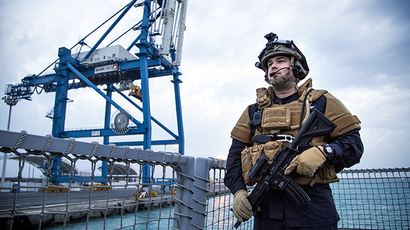US tested biological weapons in Japan’s Okinawa in the 60s – report

The American army conducted experiments with biological weapons aimed at destroying rice crops on the Japanese island of Okinawa in the 60s, Kyodo news agency reports. The alleged target of the tests was the China and Southeast Asia region.
Citing classified US documents, Japanese news agency Kyodo said the US military carried out experiments on their sovereign territory between 1961 and 1962. At this time Japan’s southern island of Okinawa was still under post-WWII, US jurisdiction. The US did similar tests in Taiwan and the American mainland, notes Kyodo.
The American army experimented with rice blast fungus – a plant
pathogen – which infects rice crops with disastrous effects. The
pathogen latches onto the rice plant as a spore and produces
lesions and spots all over the rice plant and then reproduces.
A single lesion can generate a thousand spores in one night
alone, while an entire cycle – lasting about a week – can have a
devastating effect on rice crops.
Kyodo reports that tests were conducted over a dozen times, and
mentions test sites, Nago and Shuri, in Okinawa. The US army
reported some success in their experiments and the gathering of
“useful data”.
"Field tests for stem rust of wheat and rice blast disease were
begun at several sites in the (US) Midwest and south and in
Okinawa with partial success in the accumulation of useful
data," wrote Kyodo, citing its documents.
The US government discarded all its biological weapons in 1969
and discontinued testing, after a leak of chemical weapons made
20 American soldiers stationed on the island sick. Moreover,
residents had to be evacuated from the surrounding area and were
reported to still be suffering the effects of the toxins two
years after the leak.
In response to public outrage, the US government was forced to
launch Operation Red Hat – a mission to remove all the biological
weapons stored on Okinawa.
Six years later in 1975, Washington signed the international
convention against production and possession of biological
weapons.
Okinawa came back under Japanese jurisdiction in 1972, but the US
still keeps a military presence of around 50,000 troops on the
island.
Their presence is a constant source of tension with local
populations due to crimes committed by servicemen, disruptions
caused by military flights and land use by the US military.














